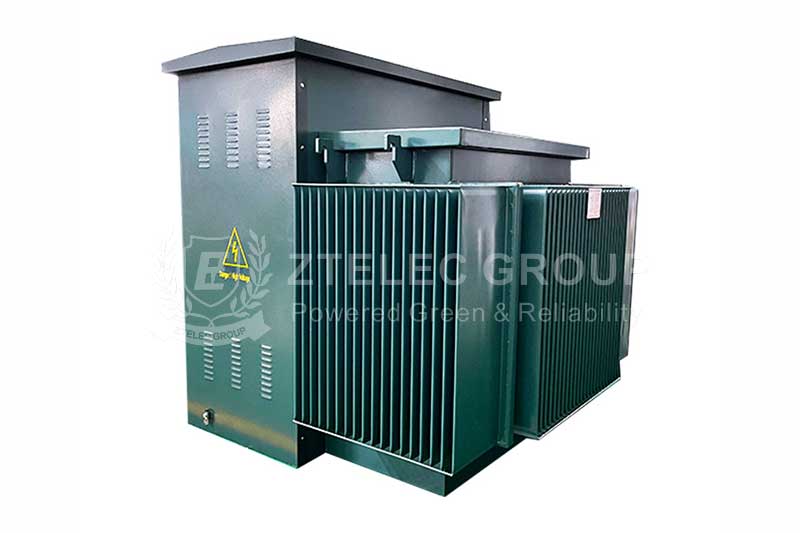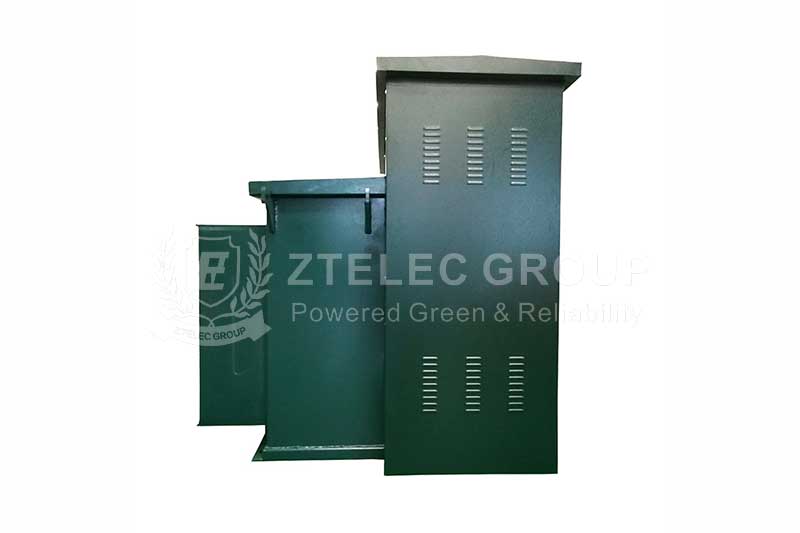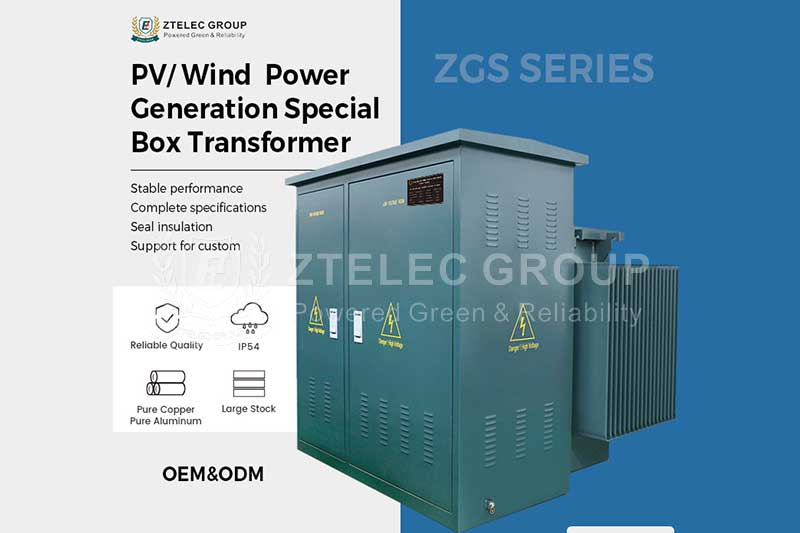American-style Pad-Mounted Transformers
Time:2025-02-10 Auther:ZTelec-www.ztelectransformer.com
American-style Pad-Mounted Transformers (also known as pad-mounted transformers) are a technology introduced from the United States in the early 1990s. They were quickly accepted due to their compact structure, easy installation, flexible operation, safety, reliability, and simple maintenance. Currently, American-style pad-mounted transformers have experienced rapid development, with over a hundred manufacturers and dozens of supporting component manufacturers, including those capable of supplying high-voltage components.
Excellent Performance: High performance level, using Type 10, 11 series or amorphous alloy series, with low loss, low noise, and strong short-circuit resistance.
Comprehensive and Reliable Functions: Capable of interrupting load current, providing full-range current protection, flexible high-voltage input methods (ring network, terminal), and offering phase failure (undervoltage protection), with the basic functions of a substation.
Low Investment, Small Footprint, Easy Installation, Quick Results: Small size, approximately 1/3 of the volume of a conventional combination substation of the same capacity, time-saving, easy installation, requiring only tightening four bolts and connecting the incoming and outgoing cables on-site.
High Safety: Fully enclosed, with no exposed conductive parts, eliminating the need to consider insulation distances and ensuring personal safety. The fully insulated elbow-type cable plugs, paired with fixed high-voltage bushing connectors, allow for easy plugging and unplugging.

1. Overview
The American-style pad-mounted transformer is a type of transformer that combines high-voltage load switches, plug-in fuses, backup protection fuses, the transformer body, and no-load switches within a sealed oil tank, using transformer oil as the insulating medium. The high-voltage circuit and transformer body are assembled inside the oil tank, with high-voltage circuit input and operations conducted on the high-voltage side. The low-voltage circuit typically consists of low-voltage circuit breakers, current transformers, and metering instruments, installed in the low-voltage compartment.
2. Transformer
The transformer design is fundamentally consistent with conventional transformer design principles. The core material can be high-permeability silicon steel or amorphous alloy, and the core structure can be laminated or wound. The windings can be made of copper wire or copper foil.
3. High-Voltage System and Output Methods
The high-voltage system wiring methods include ring network type, terminal type, and terminal dual-circuit type. The ring network type features one input, two outputs: one power input, one output from the transformer’s low-voltage side, and another leading to another transformer or electrical device, providing power to the low-voltage side of another transformer or other equipment. The terminal type features one input, one output: one power input and one output from the transformer’s low-voltage side. The terminal dual-circuit type features one input, one output, one backup: one power input, one output from the transformer’s low-voltage side, and one backup power supply, which provides power in case of a main power supply failure.
4. Elbow Bushing (Elbow Cable Plug)
The high-voltage input of the combination transformer is achieved through underground cables using elbow-type cable heads, which consist of three parts: the elbow connector, load socket, and bushing sleeve. The elbow connector comes in single-pass and double-pass types. The single-pass type connects directly to the cable and the high-voltage grid, while the double-pass type connects one end to a lightning arrester and the other to a voltage source.

5. Lightning Arrester
The lightning arrester primarily serves as protection against lightning strikes and comes in internal and external types. The internal type is placed inside the oil tank at the high-voltage output for protection.
6. Other Components
No-load switches, oil level gauges, pressure gauges, temperature gauges, pressure relief valves, and other components. Additional components such as low-voltage air circuit breakers, secondary-side metering, and compensation devices can be installed as needed. The transformer’s fuses, multi-position ring network load switches, and no-load tap changers are installed as components inside the oil tank, allowing easy replacement of fuses or operation of load switches to change the transformer’s operating conditions. The high-voltage side is powered by load-break elbow-type cables, and the low-voltage output compartment is installed outside the tank, with space for additional protective devices and instruments as required. All live parts are enclosed within the oil tank, with no exposed live components.
7. Protection System
The American-style pad-mounted transformer protection system uses high-voltage current-limiting fuses and overload protection fuses in series for high-voltage protection, and low-voltage air circuit breakers for overload and short-circuit protection in the low-voltage circuit. The plug-in fuse (overload protection fuse) has excellent tolerance to transformer surges and is primarily used to protect the transformer during overloads and low-voltage short circuits. The backup protection fuse (high-voltage current-limiting fuse) can safely interrupt all expected currents that could cause melting and is mainly used to protect the transformer and distribution system during internal faults.




